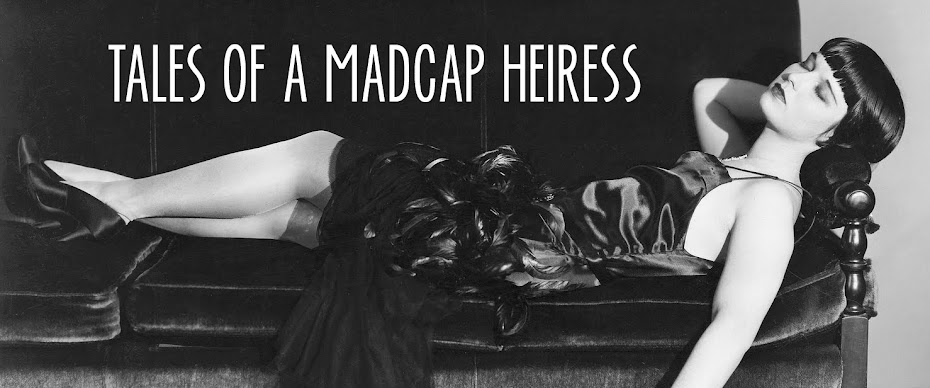Thomas Cromwell (Ben Miles) and Anne Boleyn (
“Divorced, beheaded, died. Divorced,
beheaded, survived.” So goes the rhyme that lists the fate (in order) of the
six wives of Henry VIII. Based on the number of books and films that have been
made about them and the rest of the family, it appears that we (including myself) just can’t get enough of those crazy Tudors. And so
this history nerd found herself last month at the opening night of a Broadway
play that once again tells the story of King Henry and the tragic story of his
first two wives.
Wolf
Hall: Parts I and II (it’s so long the play is broken into two parts) is based on Hilary Mantel’s books Wolf Hall and Bring Up the Bodies (as is the recent PBS series). It differs from
other accounts of this oft-told tale by making the focus of the play neither king nor queen but a bureaucrat—Thomas Cromwell, the King’s chief adviser. This commoner, a “butcher boy from Putney,” rose to power in Henry’s
court by orchestrating two of the most important events in his King’s life—the
divorce from his first wife and the beheading of his second.
The action takes place on a bare, darkened
stage with a concrete back wall embedded with a large cross. Fire sometimes
rises from the floor. Occasionally a piece of furniture will appear. Part I opens with the Royal Shakespeare Company cast on stage performing
a dance. Among them are Henry VIII (Nathaniel Parker) and Thomas Cromwell (Ben
Miles) along with their friends and enemies.
Henry VIII (Nathaniel Parker) with members of his court in Wolf Hall. Photo: Johan Persson
We soon meet Cromwell and Cardinal Woolsey
(Paul Jesson), and learn of Cromwell’s high regard for the older man who is not
only a mentor but also a father figure to him. We watch as Cromwell’s position
and power at court rises until he’s the only man that the king can trust. Unhappy
with Catherine of Aragon (Lucy Briers), a wife who cannot bear him a son, Henry
wants to get rid of her so he can marry a younger woman, Anne Boleyn (Lydia Leonard).
Can’t Cromwell help his King?
Cromwell sets out to accommodate his ruler’s
wishes. Soon Henry is breaking from the church and getting a divorce. Catherine
is banished to the countryside and replaced by the dark haired Anne. All too soon Anne, who has a sharp tongue and opinions
about everything, turns out to be a disappointment when she gives birth to a
girl (the future Elizabeth I). Part I ends with a young blonde woman (Leah Brotherhead) on stage
stating, “Oh, I’m nobody. I’m only Jane Seymour.” A portent of things to come
in Part II.
Death is all around Cromwell in Wolf Hall starting with the sudden loss
of his wife and daughters from the sweating sickness and the death
of Woolsey, hastened by his fall from grace with the King. And then there is
the execution of Cromwell’s frenemy, Thomas More, the man who in real life achieved
sainthood by refusing to denounce the church, is depicted here in a very
unsaintlike manner and Cromwell, in a reversal of the normal, is the
hero.
In Part II, the death toll increases and so
do the ghosts who come and go throughout the play. Cromwell’s beloved wife
drifts by a few times but Woolsey’s ghost sticks around and has conversations
with Cromwell. Even the King gets a visit from the ghost of his dead brother.
Death, it would seem, does not mean seeing the last of some people.
Thomas Cromwell (Ben Miles) in Wolf Hall. Photo: Johan Persson
If Part I is a bit crowded with information
and setting the stage for what’s to come, Part II runs at a rapid pace, with
Cromwell finally getting his revenge. The man who has mastered the art of
fading into the shadows, who has stood quietly by, watching and listening, puts
his plans into action when the King, grown weary of Anne, claims that she
bewitched him and that she must go. Cromwell is only too happy to oblige. In
the process of getting rid of Anne, Cromwell eliminates his enemies as well,
setting up the men who lampooned Woolsey after his death with charges of
treason. Cromwell, it seems, never forgets. Anne and the men are beheaded,
leading the way for the King to wed the mousy Jane Seymour. Cromwell has
succeeded but at what cost?
Ben Miles does a fine job as Cromwell, winning the audience's sympathy and getting some laughs (there’s actually a surprising
amount of humour in the play) before he turns menacing and starts settling
scores. Nathaniel Parker, who I’ve always been fond of, is an excellent Henry, with
the presence and stature of a king while also showing Henry at times to be nothing
more than a spoiled child. Paul Jesson as Woolsey is a standout, often
stealing scenes from his fellow actors. If there is a disappointment it's that I found Lydia
Leonard as Anne to be a bit too shrill, often shrieking her lines although she redeems herself at the end.
Wolf
Hall is long, almost six hours if you see both
parts on the same day (as I did), but it’s well worth it. These are some familiar characters that you won't mind spending time with.
Wolf
Hall is at the Winter Garden Theatre. For more information, visit here.




